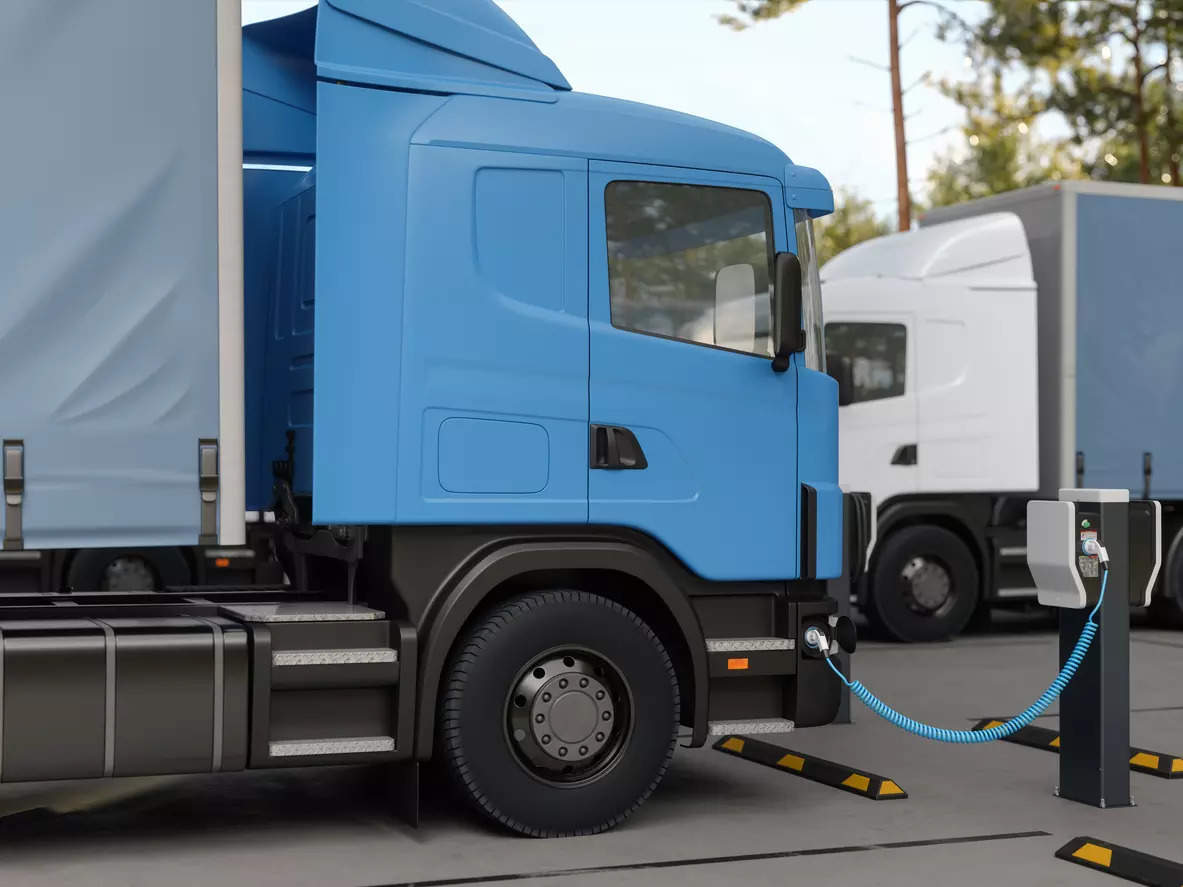
New Delhi: A set of high profile scientists has suggested that the government should offer demand incentives – much like it does for electric two wheelers, three wheelers and buses currently – to zero emission trucks (ZETs) to meet India’s ambitious emission goals. The Electric Mobility Promotion Scheme (EMPS), which is currently in operation, offers different incentives for sale of electric two and three wheeler and buses, depending on battery size. It is pertinent to note here that the electric vehicle (EV) OEMs have, almost in one voice, been seeking an extension of the subsidy scheme to ensure adequate penetration of EVs in each vehicle category, but the government has been non-committal about the continuation of the incentive scheme. The ministry of heavy industries has been speaking about a third edition of FAME (Faster Adoption and Manufacturing of Electric and Hybrid Vehicles) after FAME II ended on March 31 this year, but the scheme has not yet been announced. FAME has been the umbrella scheme for demand incentives for EVs and EMPS is just a stop-gap arrangement, slated to end next month.
Amid all this uncertainty, it is interesting to note that the report, “Bharat Zero Emission Trucking Policy Advisory” has advocated demand incentives for a new category of vehicles – ZETs – to promote zero emission trucking in India. Will the government allocate a budget for extending incentives to a new category of vehicles when it has been dithering about continuing subsidies for existing vehicle categories? Of course, the report has suggested many more policy interventions besides asking the government to offer demand incentives for promoting sale of ZETs – not a single such vehicle is being sold in India right now – but talk of more incentivisation for promoting green transportation is sure to raise concerns within the government.
“Zero Emission Trucks (ZETs) come with a substantial upfront cost, often 2.5-3.5 times higher than their internal combustion engine (ICE) counterparts. This cost disparity presents a significant hurdle for potential buyers and fleet operators looking to adopt ZETs. Policies such as FAME I, FAME II, and PLI (Production Linked Incentive) schemes have notably catalysed the EV landscape in India….incentives would be available to buyers of ZETs, partly bridging the price gap between ZETs and their ICE counterparts,” the India Zero Emission Trucking Policy Advisory has said in its report.
To bolster its recommendation of a demand incentive scheme for ZETs, the advisory has also cited several global examples . California’s ‘Hybrid and ZeroEmission Truck and Bus Voucher Incentive Project (HVIP)’ provides incentives which account for 21% of average savings per vehicle. Some EU countries and China are providing sales incentives to bridge the high cost difference between ICE and clean transportation counterparts.
The advisory has said that incentives can be worked out in different ways by the Indian policy makers. There could be incentives, for example, on performance-based parameters such as battery capacity, range, and energy consumption. Then, incentives can also be routed through public sector undertakings, they can be specific for government owned/controlled fleets. Of course, there must also be a plan to phase out the incentives eventually.
Stakeholders agree:
One of the prominent truck OEMs had sought demand incentives for ZETs earlier. Pointing towards the FAME scheme editions, a senior official of this OEM had said that incentivisation had accelerated the adoption of EVs in the case of buses for public transport. “A similar approach for private segments, especially the truck industry, would pave the way for the early adoption of ZET. FAME II offers INR 10,000 per kWh for LCVs and INR 20,000 per kWh for public transport buses. The same quantum per kWh subsidy can be extended to MHCV trucks without any cap as the logistics sector is operating with thin margins. This should reduce the cost of acquisition and help in achieving early TCO parity with respect to ICE,” this person had said.
Other demands included incentivizing financial institutions to offer extended financing options, focus on battery safety, waste management and raw material supply.
Another trucking industry stakeholder pointed out that while India has been able to manage conversion of intra-city commercial vehicles to CNG or electric vehicles, even this change is limited to the metros and big cities. He said that while OEMs are ready and capable to produce (alternative fuel vehicles and EVs), the infrastructure to support EVs is not available across the length and breadth of the country.
The Founder of Omega Seiki, Uday Narang, said “We are in agreement that electric trucks need subsidy, support from the government like FAME I And II (schemes where other vehicle categories were given demand incentives). Right now there is no subsidy for trucks.”
Omega Seiki launched electric trucks last year at INR 15 lakh for a one ton and INR 25 lakh for a three ton truck. Now these trucks will be relaunched with battery swap and fast charging options at a lower price; for swappable battery option the price will be less than INR 10 lakh and for fast charger it will be below INR 12 lakh. Tata Motors has ACE electric options.
Why ZETs?
India moves on trucks. Unlike some developed economies where a fair share of freight is transported by rail and air, road transport continues to dominate freight movement in India. Nearly 4.6 billion tons of freight moves across our country annually, generating 2.2 trillion ton kilometres of transport demand. But the peculiar Indian trait is this: nearly three-fourths of all goods are transported on trucks in our country. And as the economy expands and the demand for freight movement increases, more and more trucks will be on the road. A Niti Ayog study has pegged the share of road transport in overall freight movement at 9.6 trillion ton kilometres by 2050, which means it will more than quadruple by then. The number of trucks in India will also grow by a multiple of four, from about four million now to about 17 million by 2050. And the policy advisory released on Wednesday says that despite comprising only 3% of all vehicles, trucks are responsible for more than a third of transport related carbon dioxide emissions.
So while an increase in overall freight movement is the mark of a healthy economy, this multiplication in the number of trucks moving across India would also mean a significant increase in freight emissions, since the trucking industry today primarily uses diesel. And heavy duty trucks are estimated to account for 45% of all on-road emissions. This is where ZETs come in.

















